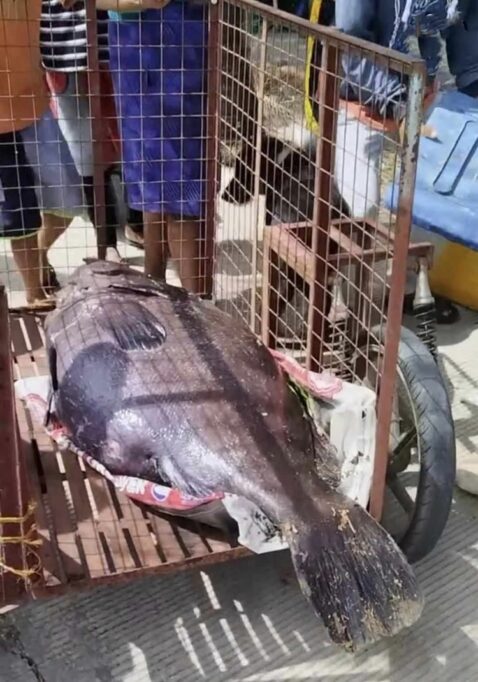In Negros Oriental, a giant Lapu-Lapu was caught
LAPU-LAPU – The residents of Brgy. Antulang in Siaton, Negros Oriental, were amazed when they spotted a gigantic fish caught by fishermen in the area.
The Negrosanon Stories Facebook page posted some photos of the enormous fish, which weighs 64 kilograms and measures almost as long as a person.
Some believe it is a blessing from the sea, but there are residents concerned about the possible reasons for the emergence of such a large fish. There is an old belief that when atypical creatures appear from the depths of the sea, it brings misfortune to the area.

However, in science, it is believed that these creatures may be experiencing unusual movements underwater, causing them to be disturbed and surface in shallow waters or coastal areas.
Meanwhile, “lapu-lapu” in the Philippines refers to various species of groupers. Specifically, groupers are fish belonging to the subfamily Epinephelinae of the family Serranidae, in the order Perciformes. The common name “grouper” is generally given to fish in two large genera: Epinephelus and Mycteroperca. Additionally, some species in smaller genera like Anyperidon, Cromileptes, Dermatolepis, Graciela, Saloptia, and Triso are also called “groupers.” Fish in the genus Plectropomus are referred to as “coral groupers.”

Groupers are characterized by their stout bodies, large mouths, and a powerful vacuum created by their mouths and gills to pull prey from a distance. They are not built for long-distance, fast swimming but can grow quite large, with some species reaching lengths of over a meter. Groupers are known to eat fish, octopuses, and crustaceans. They are mostly found in tropical waters.
In the Philippines, groupers are generally known as “lapu-lapu” in Luzon, while in the Visayas and Mindanao, they are known as “pugapo.” The Indonesian name for groupers is “kerapu.” In Latin America, groupers are known as “mero.”
Related Post: Colossal Catfish Measuring Nearly 3 Meters Found in Italy
